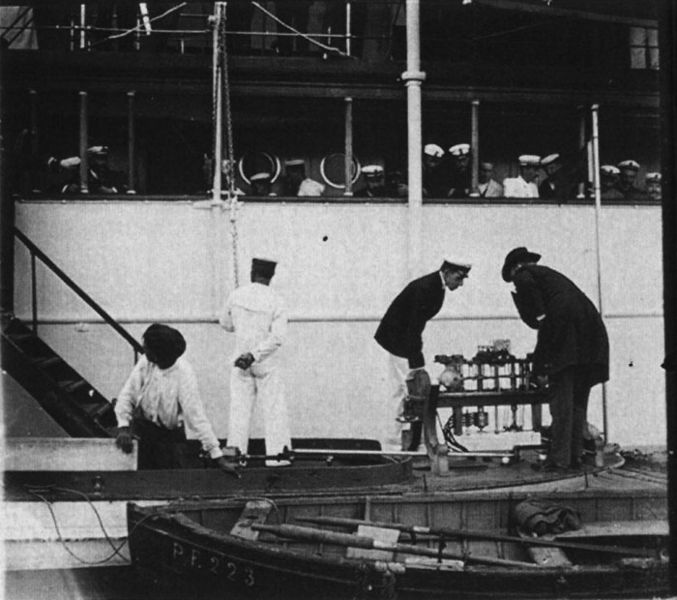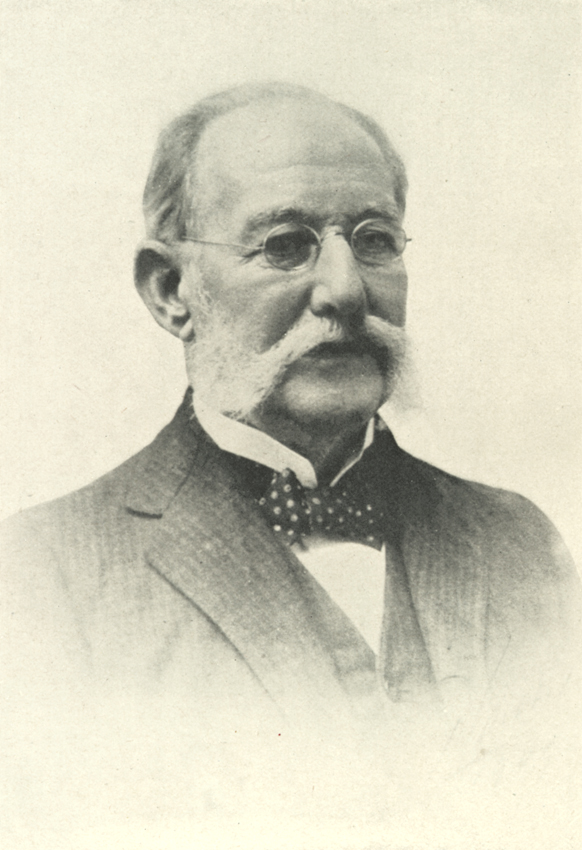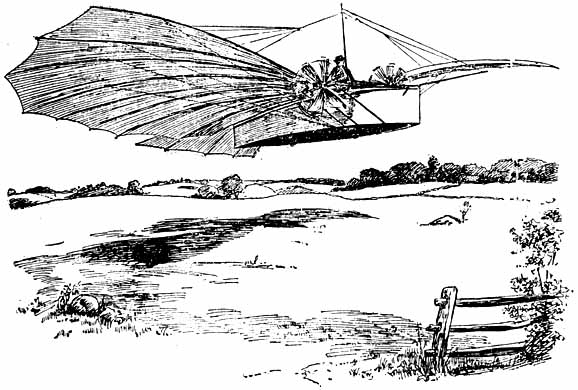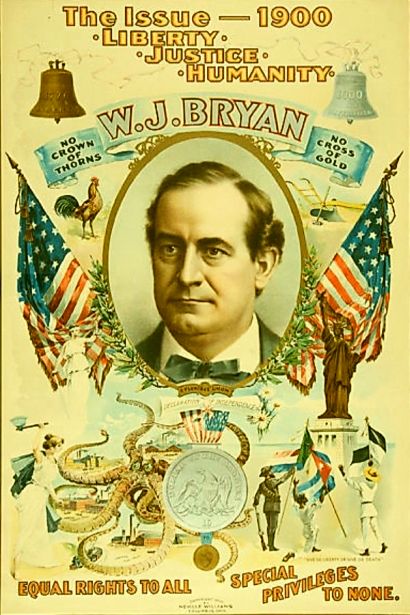Chapter VIII, Part I
A/N: Against what I normally do with this story, I am going to put up Chapter VIII in piecemeal. It is going to have 5 parts, of which I have parts 1 to 3 done, part 4 half-done and part 5 planned. Please, enjoy!
The first issue of the leading Spanish newspaper, El Noticiero Universal, for the year 1901, had a prolonged interview with several of the leading Spanish figures in many fields: politicians, writers, poets, religious leaders, scientists, businessmen... all of them to ask about what the new century would bring to Spain and to the world.
Some of them pointed that the then current socio-economic issues meant that, sooner or later, a war would break out between the Great Powers of the world, unless great efforts were made to fix the main political issues between them. Others stated that one of the greatest dangers was the influence of unchecked, rampant capitalism, which would make the lives of all workers almost unbearable and cause social upheaval. The Archbishop of Toledo, Monseñor José Ramón Quesada y Gascón, mentioned that the declining spirituality of a world centered in material goods was the main threat humans would have to face. And a few of the scientists claimed that the inability to progress and the damages caused to the environment by the growing pollution were a potential danger for humanity if nothing was done. Only the most optimistic said that the new century would be one without wars, without hunger, without tyranny, and in which all the nations of the world would be able to finally embrace each other like siblings.
No one knew what the future would bring for sure, but many could read between lines and see that few expected things to be good forever.
Still, time stopped for no one, and it was clear that everyone would have to adapt to the changing times. The greater power of the masses, the technology that was being invented day after day, the spread of new ways of communication... all of those changes to people's way of life forced those in charge to consider ideas they would not have thought about before.
The 1901 elections became a contested set because of this, and the Partido Demócrata-Radical managed to earn 276 seats in the Congreso de los Diputados, as well as enough senators to hold a comfortable majority of 87 seats in the Senado. 1901 was also the year veteran politician Antonio Cánovas del Castillo retired from politics, disappointed that he was not able to become President of the Government one last time.
The new President of the Government, Germán Gamazo, knew that he and his ministers would have to engage in a very long path to fulfil all the promises made during the electoral campaign.
For example, one of the main issues faced during the election was the growing support for the expansion of the franchise to women. This point had a large support, and it was a spiny and difficult matter to deal with, considering its magnitude and influence. The level of support between the different political parties ran the spectrum from full opposition to full support. Thanks to their victory, the Demócrata-Radicales would be able to apply their suggested plan: 30-year-old or older married women would vote in April 1904, younger married and older non-married women on April 1907 and, finally, women would be able to vote on 1910 on the same conditions as their masculine counterparts.

Some of the first members of the Spanish sufragette movement
Another matter that also affected the electorate was the future status of Santo Domingo. The peace treaty in the aftermath of the Merchants' War stated that 1903 would see a referendum in the nation over whether they would prefer to join Spain or remain independent, and opinion in the land had become strong enough to vote on favor of reunification with the Motherland, thanks to the efforts to restore the land after so many civil wars. Again, there were diverse opinions, but only the Socialists were opposed to the referendum going through.
Still, the Demócrata-Radicales had won, and they had in their hand many ideas to bring to life. For example, providing electricity for the main cities for illumination, and thus being able to reduce consumption of gas. This would also help create jobs for several years, as hydroelectric dams would be the main producer, but other possibilities, like coal power plants or wind turbines, were also being considered. Some believe that the energy from the Sun might be harnessed to produce power, but technology was not up to the task for the moment.
The construction of telecommunications towers, based on the discoveries and inventions of Leonardo Quevedo and Nikola Tesla, was also going to be of the utmost importance, particularly for the Navy, which would clearly benefit from the ability to communicate between ships at longer distances and in shorter times. And, talking about Torres Quevedo, the Navy was also mighty interested in his telekinesia system, which would play an important role if there was war, so as to direct torpedos towards their intended targets.

Assembly and first tests of the Telekino
The Spanish industry benefited greatly from the advances brought on by science, as well as the economic changes. Many new industrial poles appeared in places such as Huelva or Avila, and those that already existed had either risen in strength or resurrected, like it happened with the siderurgical industry in Málaga. This also tied with the newest market, that of transatlantic voyages. Three companies with drydocks in El Ferrol, Cadiz and Cartagena competed for passengers in travels to the United States, South America and, most importantly, the Imperial Route, a travel that began in Cuba and ended in the Carolinas after passing by every part of the Empire.
A grand effort of engineering was taking place in Nicaragua. A Spanish-German consortium called Granarbeit had managed to gain the rights to the construction of the naval connection between the Caribbean Sea and the Pacific Ocean. The works began on April 14th, mainly in the western arm of the future canal, and slowly the excavation grew, lengthened, and acquired the form it should, while engineers traveled along San Juan River's northern shore to ascertain if it would have to be moved to facilitate the travel of ships upriver.
The United States Government, increasingly irritated by the Spanish tight control over two islands in the Caribbean and possibly a third, decided to raise a “polite” question to the Nicaraguan government, “asking” why was an European company in charge of building such a masterpiece of engineering when an American one might do so even better. The Nicaraguans politely replied that the Americans had their chance and lost it, so, please, if they would kindly stop trying to meddle in what did not concern them, thank you.
Obviously, the US Government did not look kindly at this, but it would not do to start sending gunboats to the shores in the current situation, so, at best, they could seek an alternative and make sure it was that alternative what became successful. As such, they approached Colombia and suggested the possibility of building a canal across their province of Panama, in an attempt to complete what the French left half-done nearly twenty years before.
Meanwhile, in Spain, several great events took place in the year 1901, events of different importance, but all of them important in the eyes of the Spanish people.
July 7th saw the first balompié game ever between teams of the Peninsula and the Caribbean. The Águilas de Madrid welcomed the Habaneros de la Habana to the Club de Campo de Madrid, and after 90 minutes of the best play most people had ever seen, the score ended in a 3-3 tie. This game was to act as the forerunner for next year's Copa del Emperador, as planned by the Federación Española de Balompié, where the best teams from the Peninsula, the Caribbean, the African territories and the Asian territories would meet and play against each other.

A photography of the Águilas de Madrid several days before the game
On August 24th, the Portuguese people celebrated the tenth anniversary of the end of the civil war that asolated their lands for more than a year, after the murder of their king. It was a solemn occasion, attended by the Royal Family, the Council of Ministers and many political, economic and religious leaders, both from the Spanish and Portuguese halves of the Empire, as well as people from Brazil and Germany, but, still, a cause for celebration in the memory of those who fought, for good or for ill.
September 22nd saw the sixty-sixth birthday of Emperor Leopoldo. Although a relatively low-key event, people still celebrated it, sending well wishes to their monarch that has done so much good for the people.
Finally, on October 12th, the Spanish people celebreated the anniversary of the Discovery of America. In Palos de la Frontera, the first stones to a monument dedicated to Cristobal Colon's first travel across the Atlantic Ocean were placed. The School Ship Juan Sebastián Elcano arrived to Cuba after following the same route used in that same first travel. And the Retiro Park became home to a new bronze statue that represented the three ships – the Pinta, the Niña and the Santa María – that did such great travel across the ocean.
But the highlight of the day was the unveiling of the FAE Hispania, the greatest dirigible to ever fly over Spanish skies, and which was to become the flagship of the nascent Spanish Royal Air Force, so far formed by a few dirigibles and globes, although there was hope that a heavier-than-air craft might be able to join them within a decade.
As the year closed, and the bells in the Puerta del Sol marked the beginning of the year 1902, many wondered about the future, about what the rest of the century would bring to Spain, and if it would be ready for the task.
Chapter VIII – The Beginning of a New Century
Part I – 1901: The Cornerstones
The first issue of the leading Spanish newspaper, El Noticiero Universal, for the year 1901, had a prolonged interview with several of the leading Spanish figures in many fields: politicians, writers, poets, religious leaders, scientists, businessmen... all of them to ask about what the new century would bring to Spain and to the world.
Some of them pointed that the then current socio-economic issues meant that, sooner or later, a war would break out between the Great Powers of the world, unless great efforts were made to fix the main political issues between them. Others stated that one of the greatest dangers was the influence of unchecked, rampant capitalism, which would make the lives of all workers almost unbearable and cause social upheaval. The Archbishop of Toledo, Monseñor José Ramón Quesada y Gascón, mentioned that the declining spirituality of a world centered in material goods was the main threat humans would have to face. And a few of the scientists claimed that the inability to progress and the damages caused to the environment by the growing pollution were a potential danger for humanity if nothing was done. Only the most optimistic said that the new century would be one without wars, without hunger, without tyranny, and in which all the nations of the world would be able to finally embrace each other like siblings.
No one knew what the future would bring for sure, but many could read between lines and see that few expected things to be good forever.
Still, time stopped for no one, and it was clear that everyone would have to adapt to the changing times. The greater power of the masses, the technology that was being invented day after day, the spread of new ways of communication... all of those changes to people's way of life forced those in charge to consider ideas they would not have thought about before.
The 1901 elections became a contested set because of this, and the Partido Demócrata-Radical managed to earn 276 seats in the Congreso de los Diputados, as well as enough senators to hold a comfortable majority of 87 seats in the Senado. 1901 was also the year veteran politician Antonio Cánovas del Castillo retired from politics, disappointed that he was not able to become President of the Government one last time.
The new President of the Government, Germán Gamazo, knew that he and his ministers would have to engage in a very long path to fulfil all the promises made during the electoral campaign.
For example, one of the main issues faced during the election was the growing support for the expansion of the franchise to women. This point had a large support, and it was a spiny and difficult matter to deal with, considering its magnitude and influence. The level of support between the different political parties ran the spectrum from full opposition to full support. Thanks to their victory, the Demócrata-Radicales would be able to apply their suggested plan: 30-year-old or older married women would vote in April 1904, younger married and older non-married women on April 1907 and, finally, women would be able to vote on 1910 on the same conditions as their masculine counterparts.

Some of the first members of the Spanish sufragette movement
Another matter that also affected the electorate was the future status of Santo Domingo. The peace treaty in the aftermath of the Merchants' War stated that 1903 would see a referendum in the nation over whether they would prefer to join Spain or remain independent, and opinion in the land had become strong enough to vote on favor of reunification with the Motherland, thanks to the efforts to restore the land after so many civil wars. Again, there were diverse opinions, but only the Socialists were opposed to the referendum going through.
Still, the Demócrata-Radicales had won, and they had in their hand many ideas to bring to life. For example, providing electricity for the main cities for illumination, and thus being able to reduce consumption of gas. This would also help create jobs for several years, as hydroelectric dams would be the main producer, but other possibilities, like coal power plants or wind turbines, were also being considered. Some believe that the energy from the Sun might be harnessed to produce power, but technology was not up to the task for the moment.
The construction of telecommunications towers, based on the discoveries and inventions of Leonardo Quevedo and Nikola Tesla, was also going to be of the utmost importance, particularly for the Navy, which would clearly benefit from the ability to communicate between ships at longer distances and in shorter times. And, talking about Torres Quevedo, the Navy was also mighty interested in his telekinesia system, which would play an important role if there was war, so as to direct torpedos towards their intended targets.

Assembly and first tests of the Telekino
The Spanish industry benefited greatly from the advances brought on by science, as well as the economic changes. Many new industrial poles appeared in places such as Huelva or Avila, and those that already existed had either risen in strength or resurrected, like it happened with the siderurgical industry in Málaga. This also tied with the newest market, that of transatlantic voyages. Three companies with drydocks in El Ferrol, Cadiz and Cartagena competed for passengers in travels to the United States, South America and, most importantly, the Imperial Route, a travel that began in Cuba and ended in the Carolinas after passing by every part of the Empire.
A grand effort of engineering was taking place in Nicaragua. A Spanish-German consortium called Granarbeit had managed to gain the rights to the construction of the naval connection between the Caribbean Sea and the Pacific Ocean. The works began on April 14th, mainly in the western arm of the future canal, and slowly the excavation grew, lengthened, and acquired the form it should, while engineers traveled along San Juan River's northern shore to ascertain if it would have to be moved to facilitate the travel of ships upriver.
The United States Government, increasingly irritated by the Spanish tight control over two islands in the Caribbean and possibly a third, decided to raise a “polite” question to the Nicaraguan government, “asking” why was an European company in charge of building such a masterpiece of engineering when an American one might do so even better. The Nicaraguans politely replied that the Americans had their chance and lost it, so, please, if they would kindly stop trying to meddle in what did not concern them, thank you.
Obviously, the US Government did not look kindly at this, but it would not do to start sending gunboats to the shores in the current situation, so, at best, they could seek an alternative and make sure it was that alternative what became successful. As such, they approached Colombia and suggested the possibility of building a canal across their province of Panama, in an attempt to complete what the French left half-done nearly twenty years before.
Meanwhile, in Spain, several great events took place in the year 1901, events of different importance, but all of them important in the eyes of the Spanish people.
July 7th saw the first balompié game ever between teams of the Peninsula and the Caribbean. The Águilas de Madrid welcomed the Habaneros de la Habana to the Club de Campo de Madrid, and after 90 minutes of the best play most people had ever seen, the score ended in a 3-3 tie. This game was to act as the forerunner for next year's Copa del Emperador, as planned by the Federación Española de Balompié, where the best teams from the Peninsula, the Caribbean, the African territories and the Asian territories would meet and play against each other.

A photography of the Águilas de Madrid several days before the game
On August 24th, the Portuguese people celebrated the tenth anniversary of the end of the civil war that asolated their lands for more than a year, after the murder of their king. It was a solemn occasion, attended by the Royal Family, the Council of Ministers and many political, economic and religious leaders, both from the Spanish and Portuguese halves of the Empire, as well as people from Brazil and Germany, but, still, a cause for celebration in the memory of those who fought, for good or for ill.
September 22nd saw the sixty-sixth birthday of Emperor Leopoldo. Although a relatively low-key event, people still celebrated it, sending well wishes to their monarch that has done so much good for the people.
Finally, on October 12th, the Spanish people celebreated the anniversary of the Discovery of America. In Palos de la Frontera, the first stones to a monument dedicated to Cristobal Colon's first travel across the Atlantic Ocean were placed. The School Ship Juan Sebastián Elcano arrived to Cuba after following the same route used in that same first travel. And the Retiro Park became home to a new bronze statue that represented the three ships – the Pinta, the Niña and the Santa María – that did such great travel across the ocean.
But the highlight of the day was the unveiling of the FAE Hispania, the greatest dirigible to ever fly over Spanish skies, and which was to become the flagship of the nascent Spanish Royal Air Force, so far formed by a few dirigibles and globes, although there was hope that a heavier-than-air craft might be able to join them within a decade.
As the year closed, and the bells in the Puerta del Sol marked the beginning of the year 1902, many wondered about the future, about what the rest of the century would bring to Spain, and if it would be ready for the task.



